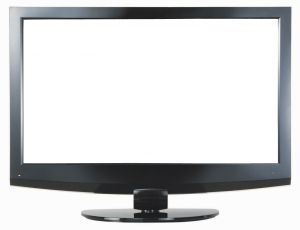History of Television

In 1923 Vladimir Zworykin patents the tube Iconoscope for television cameras, which made possible the electronic television. The first system semi-mechanical analogue television was demonstrated in February 1924 in London, and later moving images on October 30, 1925. A complete electronic system was demonstrated by John Logie Baird and Philo Taylor Farnsworth in 1927. The first analogue service was WGY in Schenectady, New York, opened on May 11, 1928.
The first television sets were radios with a device consisting of a neon tube in a mechanically spinning disk (Nipkow disk) that produced a red image of the size of a postage stamp. The first high-definition service in Germany in March 1935, but was only available in 22 public rooms. One of the first major broadcast television was the Berlin Olympics of 1936. Television usage increased dramatically after the Second World War due to technological advances that have arisen with the necessities of war and the additional income available (televisions in the 1930s cost the equivalent of $ 7000 today (2001) and there was little available programming).
A color television came in 1954, the U.S. network NBC. A year before the government of the United States of America has approved the transfer of colors offered by CBS, but when RCA introduced a new system that did not require changes in the old appliances in black and white, CBS abandoned its proposal in favor of new.
In 1960 the Japanese markets SONY television receivers with transistors. The satellite Telstar transmits television signals across the Atlantic Ocean in 1962. Miniaturization came in 1979 when Matsushita has patented the pocket television-screen TVs.
In Brazil, the first television broadcast took place on behalf of leopoldinense Olavo Freire Bastos, who built the necessary equipment and broadcast a football match on 28 September 1948, the city of Juiz de Fora, Minas Gerais.
Television in its original form and even more popular today, involves the transmission of sound and moving images by wireless radio frequency (RF), which are captured by a receiver (the TV). In this sense, is an extension of the radio.
Starting in the 1920s, modern television is divided into three different trends:Apparatus televisions nly.
Integrated systems with DVD players and / or video-game mounted on the same TV (usually smaller models with screens up to 17 inches, because the idea is to have a complete portable system);
Systems with separate big screen (video display, radio, sound system) for the User can put them together as a home theater. This system is of interest to film buffs and videophiles who prefer components that can be traded separately.
There are several types of monitors or video screens used in modern television equipment. The most common are CRTs for up to 40 inches diagonal. Most of the big-screen televisions and large screen (up to 100 inches) use projection technology. Three types of projection systems are used in television: Cathode ray tubes (CRT), LCD (liquid crystal) and integrated circuits (chips) of the reflected image. Recent advances have brought flat screens and flat screens for televisions that use liquid crystal technology for active matrix LCD or plasma displays. TVs or large screen and flat are only 4 inches thick and can be hung on the wall like a painting. LCD TVs and Plasma today have on average 7.5 cm expessura and screens ranging from 3.5 to 65 inches. In 2008 was launched DTV Portable, with 3.5-inch screen and Digital TV tuner. Many brands now have deployed digital set-top box for TVs and use Full HD resolutions.
ECCO TV model of Lumines.
New technologies are appearing, some of them are:
LED TV, Samsung - Televisions with 3 cm thick and environmentally friendly.
In USB, Philips - TV with USB slot for movies, music and photos without DVD Player.
DTV BuiltIn from LG - Converter integrated digital TV.
Scarlet series from LG (Black and Red piano in various combinations)
Pixel Plus, Philips (Increase the number of pixels on the screen.)
Touch of Color, Samsung (colored edges to wrap.)
Ambilight, Philips (lamps behind the television that enlarges the field of view of the screen.)
Invisible Screen of Lumines (TV where the screen appears only after being connected.)
Design Collection, Philips (acrylic finish on the edges.)
Touch Interface of Lumines (TV with all those touch.)
Bravia Engine of the Canon (images more realistic, largely on the move.)
Full HD 1080p (1920 x 1080 progressive lines), the highest resolution available in televisions, (usually LCD or plasma.)
HDMI and DVI (for connecting video equipment to high definition.)

Like it on Facebook, Tweet it or share this article on other bookmarking websites.

